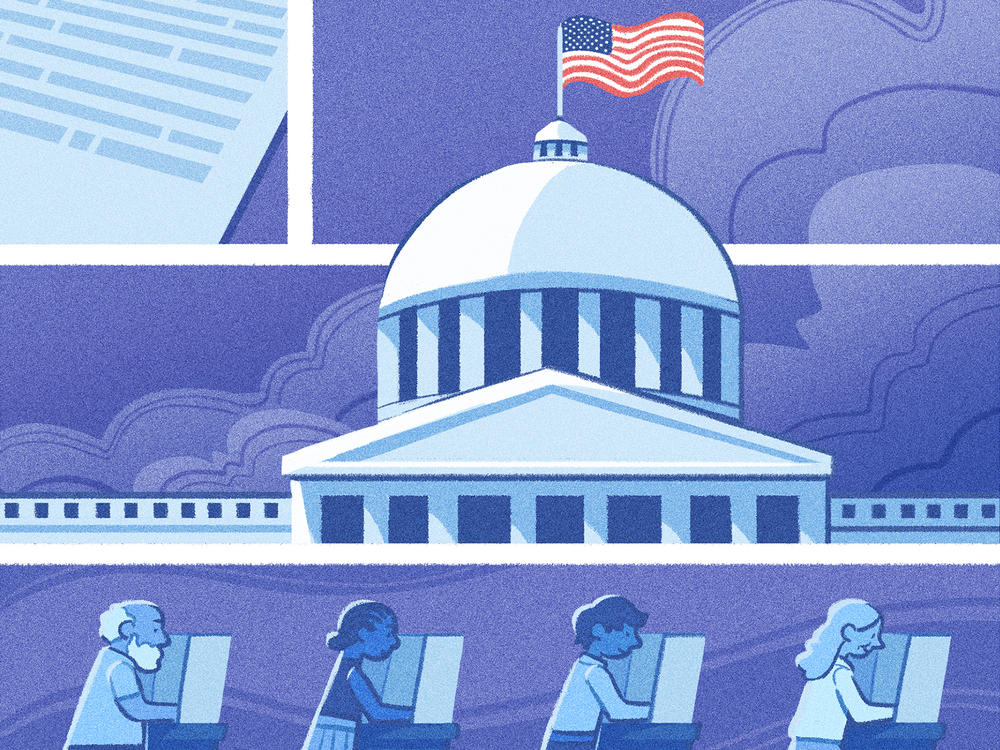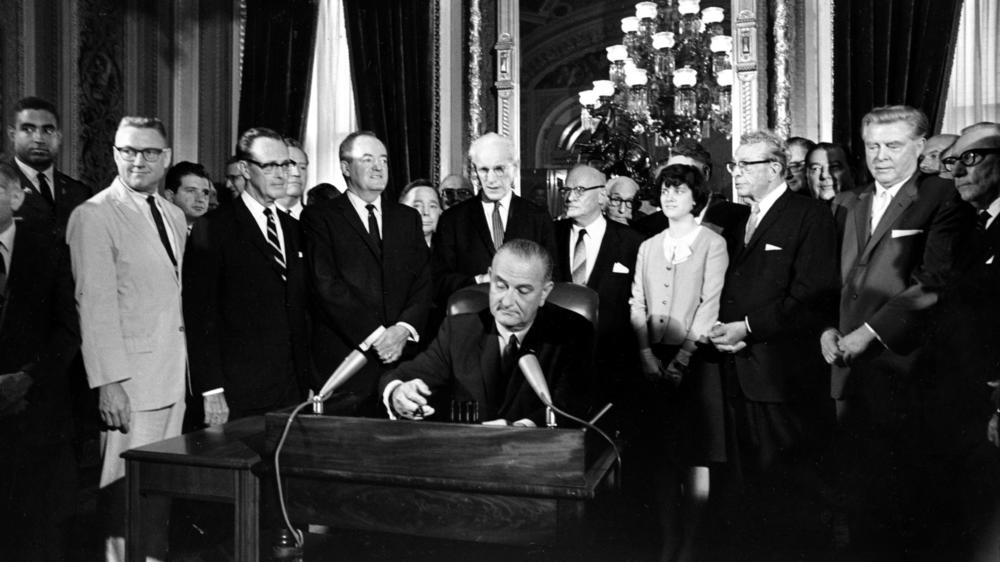Section Branding
Header Content
How The Voting Rights Act Came To Be And How It's Changed
Primary Content
The Justice Department calls the Voting Rights Act of 1965 "the most successful piece of civil rights legislation ever adopted by the United States Congress."
The law put an end to literacy tests, which prevented many people from registering to vote, in a half-dozen states, granted the attorney general the power to send observers to witness elections and gave the federal government the authority to preapprove voting and election changes in places with a history of discrimination.
Within a few years of its passage, the Voting Rights Act had paved the way for thousands of Black and brown voters to go to the ballot box. Bipartisan majorities in Congress reauthorized the act five times, most recently in 2006, when then-President George W. Bush lauded the law and pledged to defend it in court.
The landmark law has gotten a different reception at the highest court in the land in the last few years. In two decisions, spanning eight years, a conservative majority of Supreme Court justices upended the law's core enforcement powers.
The most recent decision, in July, has prompted national marches, including one set to culminate in Washington, D.C., on Saturday, the anniversary of the Rev. Martin Luther King Jr.'s 1963 March on Washington.
The rally comes on the heels of House passage of legislation to override the Supreme Court and update the Voting Rights Act. But prospects for the bill are dim in a closely divided Congress.
How the law came to be
In the years after the Civil War, the United States adopted three constitutional amendments. The 13th Amendment ended slavery and involuntary servitude "except as punishment for crime." The 14th Amendment codified birthright citizenship and promised "due process of law," among other steps. And the 15th Amendment gave Black men the right to vote.
For a brief period, Black voters raced to the ballot box, electing officials of their choice to high office. But all too soon, Southern states passed their own laws making it more difficult for people of color to vote, including literacy tests, poll taxes and a horrible campaign of violence. By the 1960s, white voter registration in some states was 50 percentage points greater than Black voter registration.
"Give us the ballot and we will fill our legislative halls with men of goodwill and send to the sacred halls of Congress men who will not sign a 'Southern manifesto' because of their devotion to the manifesto of justice," King said in a major address in Washington in 1957.
Then, in early 1965, armed state troopers viciously beat a group of nonviolent marchers in Selma, Ala. Footage of those protesters being sprayed with chemicals and clubbed by police batons shocked the conscience of the country and helped then-President Lyndon B. Johnson make the case for the Voting Rights Act.
Months later, Johnson signed the act into law.
"What history shows is that sort of federal intervention was the main thing that could affect systemic change to the problem of racial discrimination in voting," professor Atiba Ellis of Marquette University told The NPR Politics Podcast for its legal series, "The Docket."
What's changed
In 2013, in a case called Shelby County v. Holder, Chief Justice John Roberts concluded that a lot of things had changed, that the world had changed since the civil rights movement of the 1950s and 1960s.
The 5-4 decision effectively derailed the Justice Department's system for preapproving election changes in jurisdictions with a history of discrimination, putting a heavy burden on the federal government to identify any such changes and sue to prevent them from taking effect. The high court ruling prompted states to pass new restrictions on voting.
Then, in July, another conservative court majority severely weakened the remaining enforcement tool for the Department of Justice: a provision that gave the federal government the legal authority to challenge voting laws that discriminate on the basis of race, color and language minority status.
In Brnovich v. Democratic National Committee, Justice Samuel Alito concluded that some inconvenience to voters would not run afoul of the Constitution. His majority opinion also gave states a powerful defense: They could raise concerns about voter fraud to justify their election changes without having to prove any such fraud existed.
Lawsuits by the Justice Department and civil rights groups over voting changes in Georgia are continuing in the courts. But it's not yet clear what fate they will meet.
The current fight
Democrats in Congress have been pressing for at least two different voting rights measures that would restore the federal government's enforcement powers at the ballot box. One is named after the late Rep. John Lewis, a Georgia Democrat whose beating on "Bloody Sunday" in 1965 horrified a national audience and helped push the Voting Rights Act over the finish line on Capitol Hill later that year.
But Democrats are facing mathematical challenges. Based on current Senate rules, they need 60 votes, including 10 Republicans, to advance any voting measures. So far, they've been unable to muster them.
"It's a critical moment in the fight for voting rights," Mahogane Reed of the NAACP Legal Defense and Educational Fund told The NPR Politics Podcast. "The onslaught of new voting laws is so heavy. Intervention from Congress is absolutely critical."
Copyright 2021 NPR. To see more, visit https://www.npr.org.
Bottom Content


